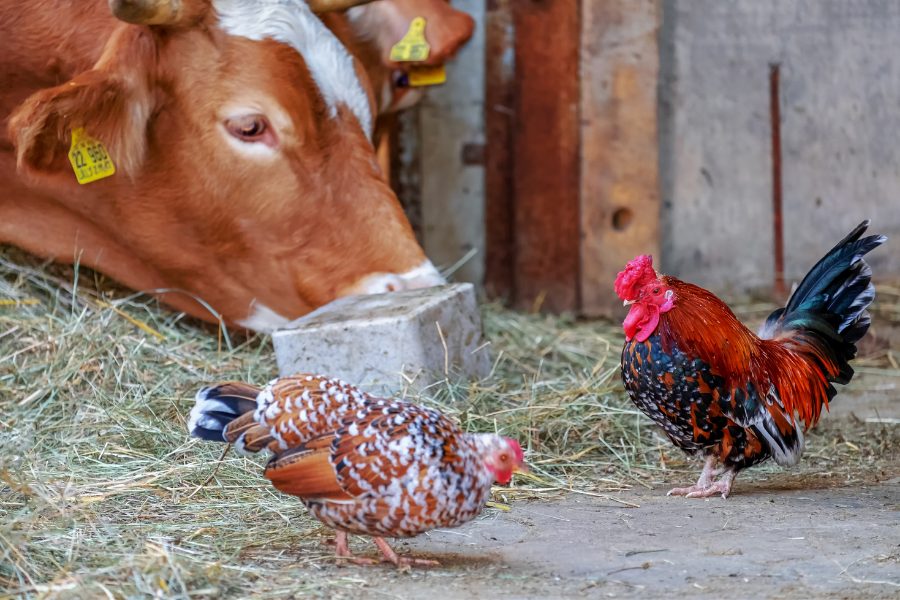To address concerns about competition in the U.S. ranching and farming system, USDA will allocate $500 million to expand meat and poultry processing capacity across the nation. The agency said the move was “one of several key steps” to increase competition in agricultural markets after the COVID-19 pandemic exposed vulnerabilities in the agricultural supply chain.
The action, part of a larger White House effort under the Biden Administration to increase competition in certain industries, will draw funding from the American Rescue Plan and is part of a $4 billion effort by the agency dubbed the Build Back Better initiative. An additional $150 million will be used to help existing small processing facilities as they weather the COVID-19 pandemic.
“The COVID-19 pandemic led to massive disruption for growers, food workers, and consumers alike. It exposed a food system that was rigid, consolidated, and fragile. Meanwhile, those growing, processing and preparing our food are earning less each year in a system that rewards size over all else,” said Agriculture Secretary Tom Vilsack in a press release. “To shift the balance of power back to the people, USDA will invest in building more, better, and fairer markets for producers and consumers alike.”
USDA said additional steps will include a revitalization of the Packers and Stockyards Act, issuing new rules on “Product of USA” labels, and developing plans to expand farmers’ access to new markets.
“The investments USDA will make in expanding meat and poultry capacity, along with restoration of the Packers and Stockyards Act, will begin to level the playing field for farmers and ranchers,” said Vilsack.
Addressing Market Concentration in Agriculture
The agency plans to offer grants, loans, and technical assistance to address concentration within the meat and poultry sectors and relieve supply chain bottlenecks by supporting new meat and poultry processing facilities, with those facilities expected to create competitive opportunities for producers in local and regional food systems.
Additionally, the agency detailed the following initiatives:
- USDA will invest more than $55 million in strengthening existing small meat processing capacity, benefitting smaller producers and processing plants
- USDA has made another $55.2 million available for Meat and Poultry Inspection Readiness Grants to support expanded meat and poultry slaughter and processing capacity and efficiency while maintaining strong inspection and food safety standards.
- USDA will dedicate $100 million to help small processing plants weather the volatility and unexpected costs that COVID imposed
- With American Rescue Plan funds, USDA will provide $100 million to reduce the financial burden of overtime inspection fees for small poultry, meat and egg processing plants, which provide farmers with local alternatives and greater capacity to process livestock.
Revitalizing the Packers and Stockyards Act
USDA said it would revitalize the existing Packers and Stockyards act to ensure fair practices. It said the law was designed to ensure a fair and competitive marketplace and protect farmers against abuse at the hands of large businesses, but that it had been weakened under the previous administration. To facilitate effective enforcement of the act, USDA will be conducting three rulemakings:
- First, the rulemakings will clarify the conduct that USDA considers a violation of the Packers and Stockyards Act, including conduct that is unfair, deceptive, or unjustly discriminatory against farmers and growers.
- Second, the agency will address oppressive practices in chicken processing.
- Third, the rulemakings will reinforce the longstanding USDA position that it is not necessary to demonstrate harm or likely harm to competition in order to establish a violation of the act.
USDA intends to develop a plan to increase opportunities for farmers to access markets, including strategies to support value-added markets and local and regional food distribution systems. USDA will also propose strategies to enhance transparency and accountability in key markets. Together, the agency believes the initiatives will give farmers more choices on how they buy and sell.
New Rules on “Product of USA” Labels
USDA is also reviewing “Product of USA” labeling on meat products, with a specific focus on what the label means to U.S. consumers.
“I congratulate the FTC on strengthening this important protection for American consumers. USDA will complement the FTC’s efforts with our own initiative on labeling for products regulated by FSIS, an area of consumer labeling where USDA has a long tradition of protecting consumers from false and misleading labels,” said Vilsack.
The agency will complete a rulemaking process as part of the review.
The Industry Responds
The American Farm Bureau Federation (AFBF) signaled support for the executive order, arguing the disconnect between consumers, processers, and farmers/ranchers was never more evident than in the post-pandemic period.
“AFBF notes President Biden’s effort to address several pressing issues facing America’s farmers and ranchers comes at a time when many in the farm supply chain are frustrated. Growing concern about livestock market fairness is accelerated by the continued rise in grocery store meat prices while ranchers struggle to break even on the cattle they raise and poultry farmers being locked into agreements with very little recourse if they’re underpaid,” said AFBF president Zippy Duvall.












